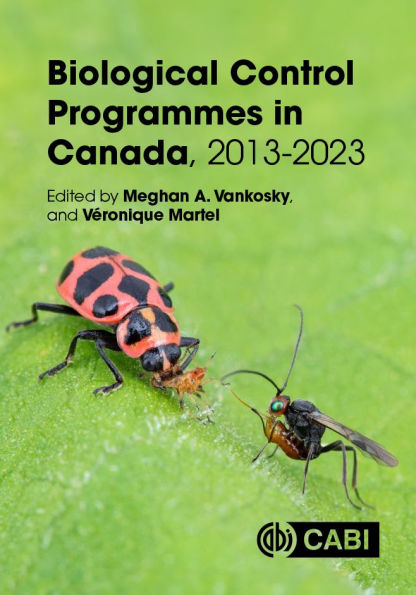Biological control is an important component of integrated and ecological pest management programmes. Its importance continues to increase as plant protection is challenged with climate change, invasive species, pesticide resistance, de-registration of pesticide active ingredients, and increasing consumer demands for sustainably produced food and fibre. Biological control is highly compatible with organic cropping systems and evolving pest management frameworks, including biovigilance. Canada continues to be a world leader in biological control research, development of biological control policy, and implementation of biological control programmes. This is the sixth volume of a series of books reporting on the status of biological control research and on biological control programmes employed in Canada. This volume features 58 case study chapters that describe the research and progress in implementation of biological control for pests including insects, mites, weeds, and plant pathogens. Topics important to biological control, including policy, emerging technologies, biological control in urban landscapes and future targets for biological control are reviewed. Although the volume focusses on the Canadian biological control experience, the chapters will be of interest to a global audience of researchers and students of biological control, risk assessment, ecology, and pest management. This book Offers a detailed analysis of the state-of-the-art of biological control in Canada. Explains how biological control research is responding to challenges including climate change and invasive alien species. Gives insights in effective risk assessment and pest management. It is a valuable resource for students and researchers of pest management and biological control, and for practitioners and policy-makers needing analysis of the practical implications of using this approach.
1145638433
Biological Control Programmes in Canada, 2013-2023
Biological control is an important component of integrated and ecological pest management programmes. Its importance continues to increase as plant protection is challenged with climate change, invasive species, pesticide resistance, de-registration of pesticide active ingredients, and increasing consumer demands for sustainably produced food and fibre. Biological control is highly compatible with organic cropping systems and evolving pest management frameworks, including biovigilance. Canada continues to be a world leader in biological control research, development of biological control policy, and implementation of biological control programmes. This is the sixth volume of a series of books reporting on the status of biological control research and on biological control programmes employed in Canada. This volume features 58 case study chapters that describe the research and progress in implementation of biological control for pests including insects, mites, weeds, and plant pathogens. Topics important to biological control, including policy, emerging technologies, biological control in urban landscapes and future targets for biological control are reviewed. Although the volume focusses on the Canadian biological control experience, the chapters will be of interest to a global audience of researchers and students of biological control, risk assessment, ecology, and pest management. This book Offers a detailed analysis of the state-of-the-art of biological control in Canada. Explains how biological control research is responding to challenges including climate change and invasive alien species. Gives insights in effective risk assessment and pest management. It is a valuable resource for students and researchers of pest management and biological control, and for practitioners and policy-makers needing analysis of the practical implications of using this approach.
0.0
In Stock
5
1

Biological Control Programmes in Canada, 2013-2023
672
Biological Control Programmes in Canada, 2013-2023
672Related collections and offers
0.0
In Stock

Product Details
| ISBN-13: | 9781800623279 |
|---|---|
| Publisher: | CAB International North America |
| Publication date: | 08/30/2024 |
| Sold by: | Barnes & Noble |
| Format: | eBook |
| Pages: | 672 |
| File size: | 5 MB |
About the Author
From the B&N Reads Blog
